Few RECORD readers will have heard of Montigny-le-Bretonneux, a 32,000-inhabitant community located 16 miles southwest of Paris. Yet many will recognize one of its landmarks: Ricardo Bofill’s Les Arcades du Lac (1972–80), a collective-housing scheme that, inspired by the 16th-century Château de Chenonceaux, suspends residents on a viaduct over water. Just a stone’s throw away, Strasbourg-based architects Dominique Coulon & Associés recently completed a $10.6 million municipal dance, music, and theater school.
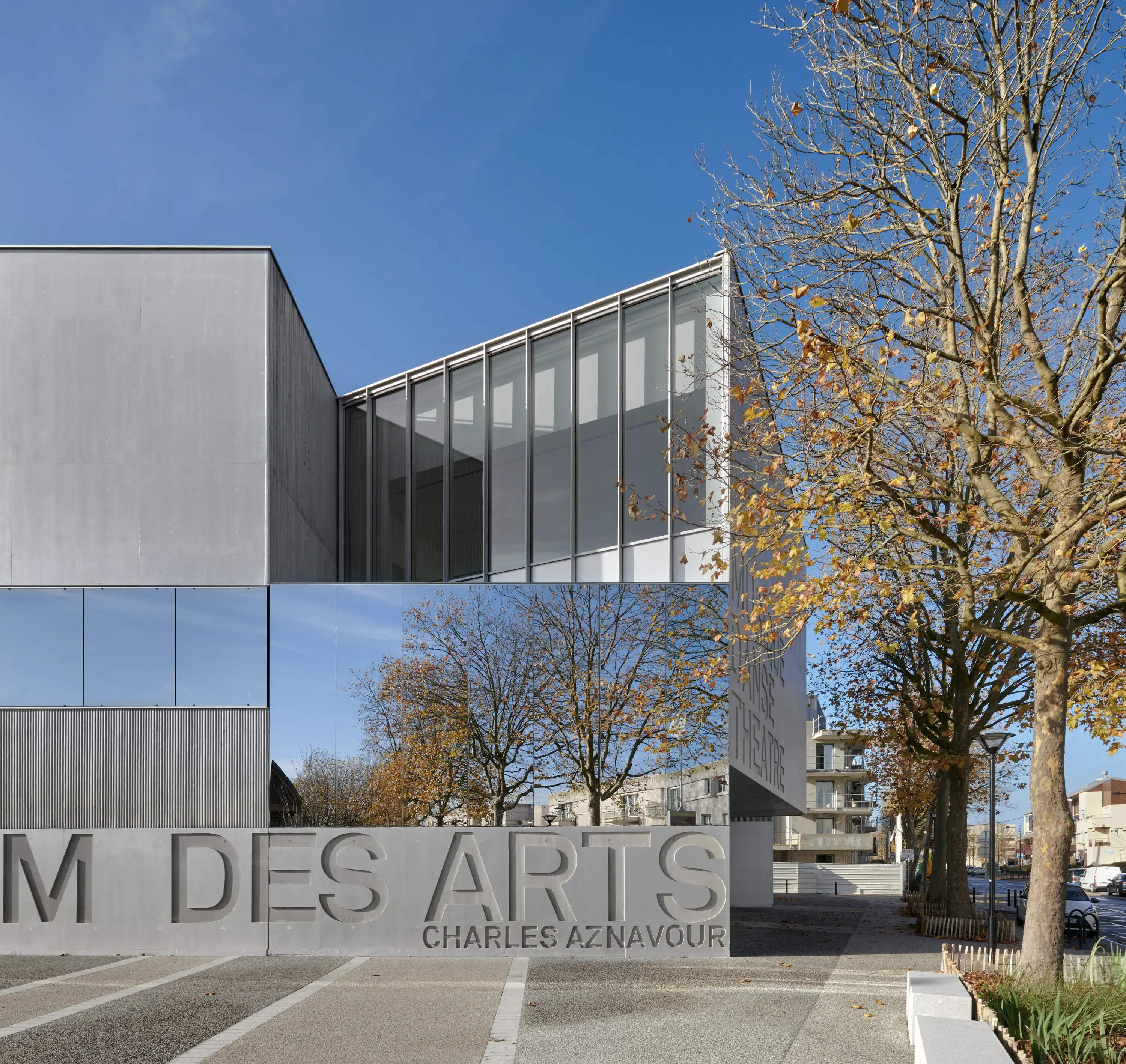
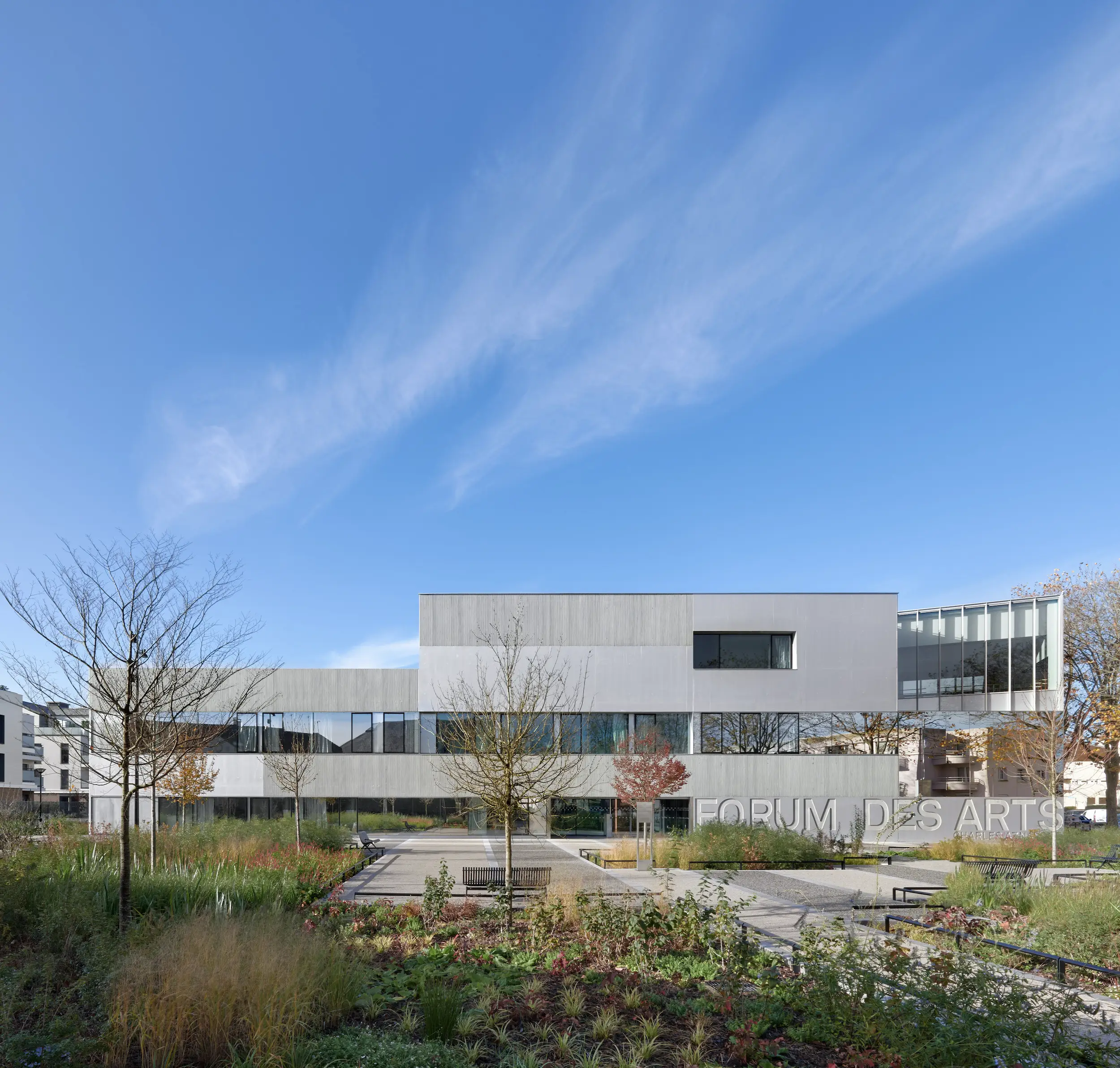
Occupying a rectangular site, the boxy, concrete-shelled performing arts school brings together three artistic disciplines under a single roof; the four-story municipal building stands at the site of a razed high school. Photos © Eugeni Pons
Montigny belongs to Saint-Quentin-en-Yvelines, one of five satellite new towns planned in the 1960s to manage development in the Paris region. “We sought to create an internal world where, once inside, you forget what’s outside,” deadpans firm founder and principal Dominique Coulon about the disparate suburban fabric surrounding his 36,000-square-foot building. In Montigny today, jobs outnumber inhabitants, and the Forum des Arts Charles Aznavour, as the complex has been rather grandly baptized in honor of the legendary Franco-Armenian crooner, is one of several structures that have replaced a high school that was demolished for lack of students.
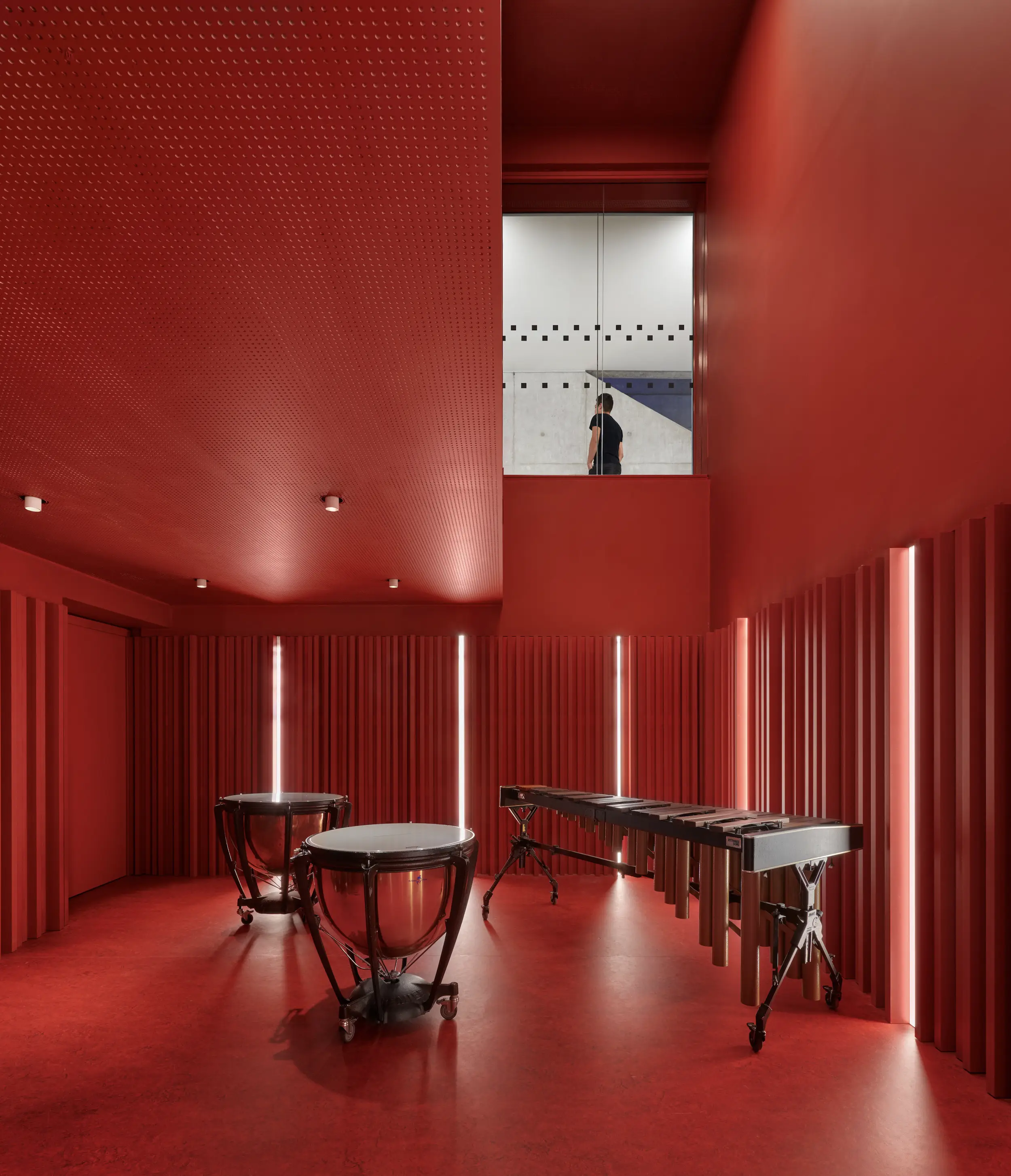
Located on the basement level is a double-height percussion room. Photo © Eugeni Pons
Occupying the entirety of its rectangular site—the only way to squeeze in all the program—the four-story school tries hard not to be a boring box: the roofline drops down a level to form a rear terrace, and, at the rectangle’s short northeastern end, a cuboid volume appears to break forward diagonally towards the main thoroughfare. The building’s concrete shell—the only material that could meet acoustic requirements—is expressed externally in slick and rather blank facades that, though they stand out from the neighboring housing, say nothing about what happens inside. To remedy this, inscribed in giant letters on the northeastern elevation are the words “MUSIQUE, DANSE, THEATRE.”
More giant letters spell out the Forum’s name on the long, southeastern facade, which gives onto a new piazza that connects to Les Arcades du Lac. In the middle of this elevation, the recessed main entrance leads into a central atrium rising the building’s entire height. Lined up around the school’s perimeter where they receive abundant daylight, the rehearsal rooms vary greatly in size, from modest cells for violin practice to capacious all-white dance studios. In the southwestern corner, descending from the ground floor into the basement, a generous auditorium allows public performance of all three disciplines.
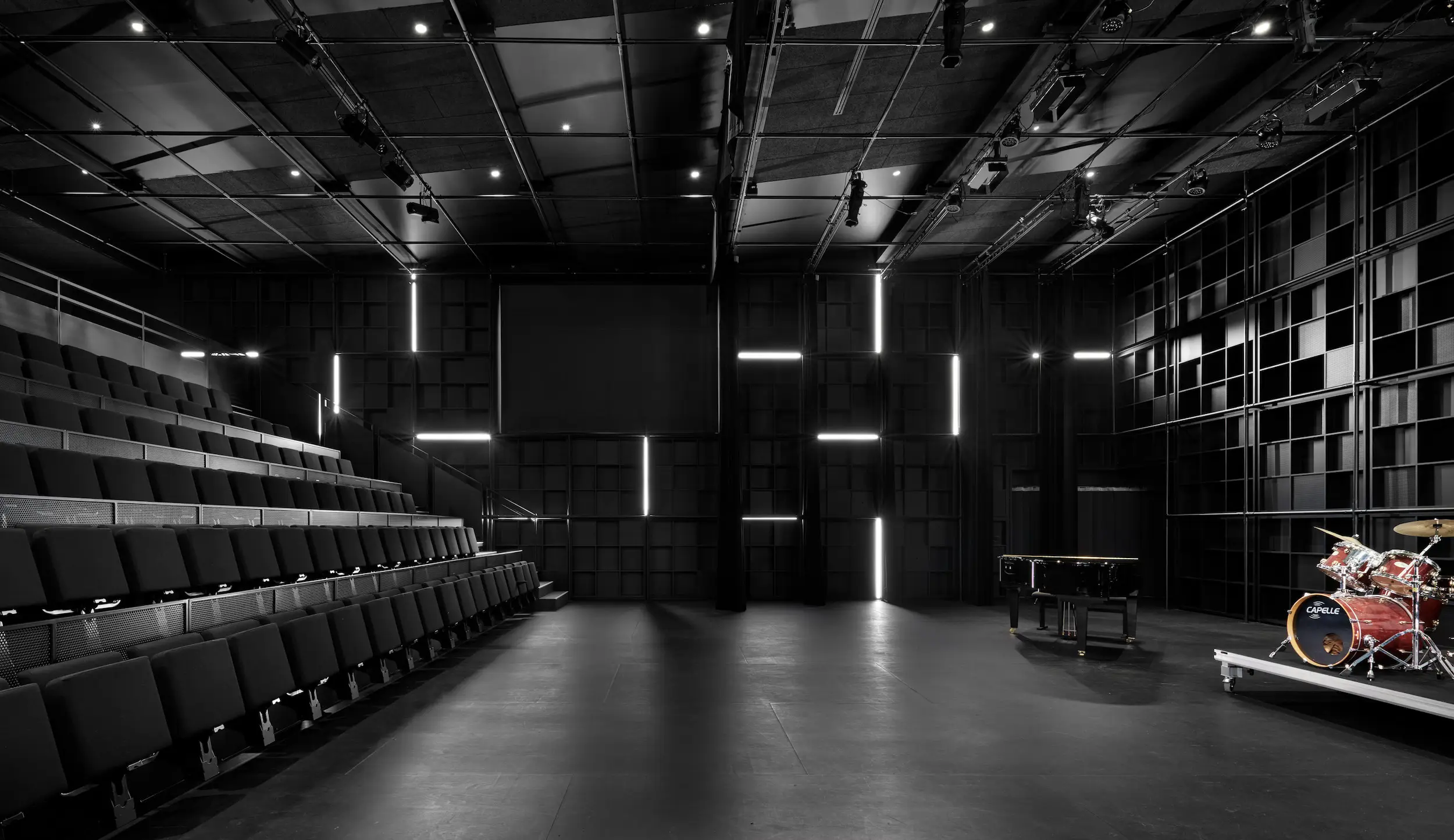
A large black-box auditorium accommodates music, dance, and theater performances. Photo © Eugeni Pons
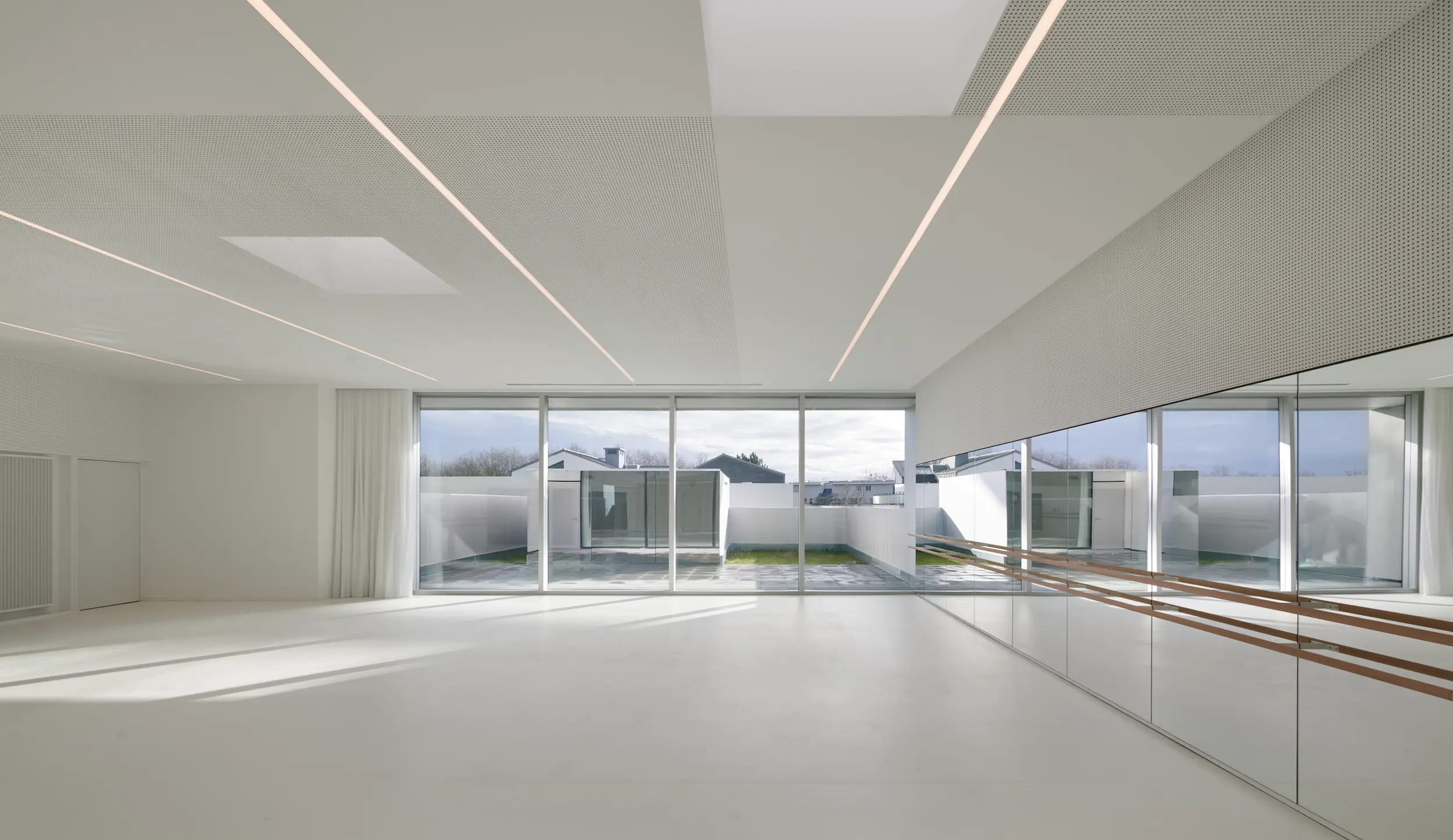
One of multiple dance rehearsal spaces at the school. Photo © Eugeni Pons
Circulation spaces, which often double up as waiting areas, dilate and contract both horizontally and vertically, and, as far as possible, are naturally lit. Part of a strategy to encourage interaction between disciplines, they also feature transparent glass partitions that allow some of the rehearsal spaces to be viewed from outside. “We tried to make everything as visible as possible to incite curiosity and desire,” explains Coulon. A leitmotif throughout the building, raw concrete alternates with surfaces painted in white (corridors and many of the rehearsal rooms), deep red (the piano practice space), and black (the auditorium).
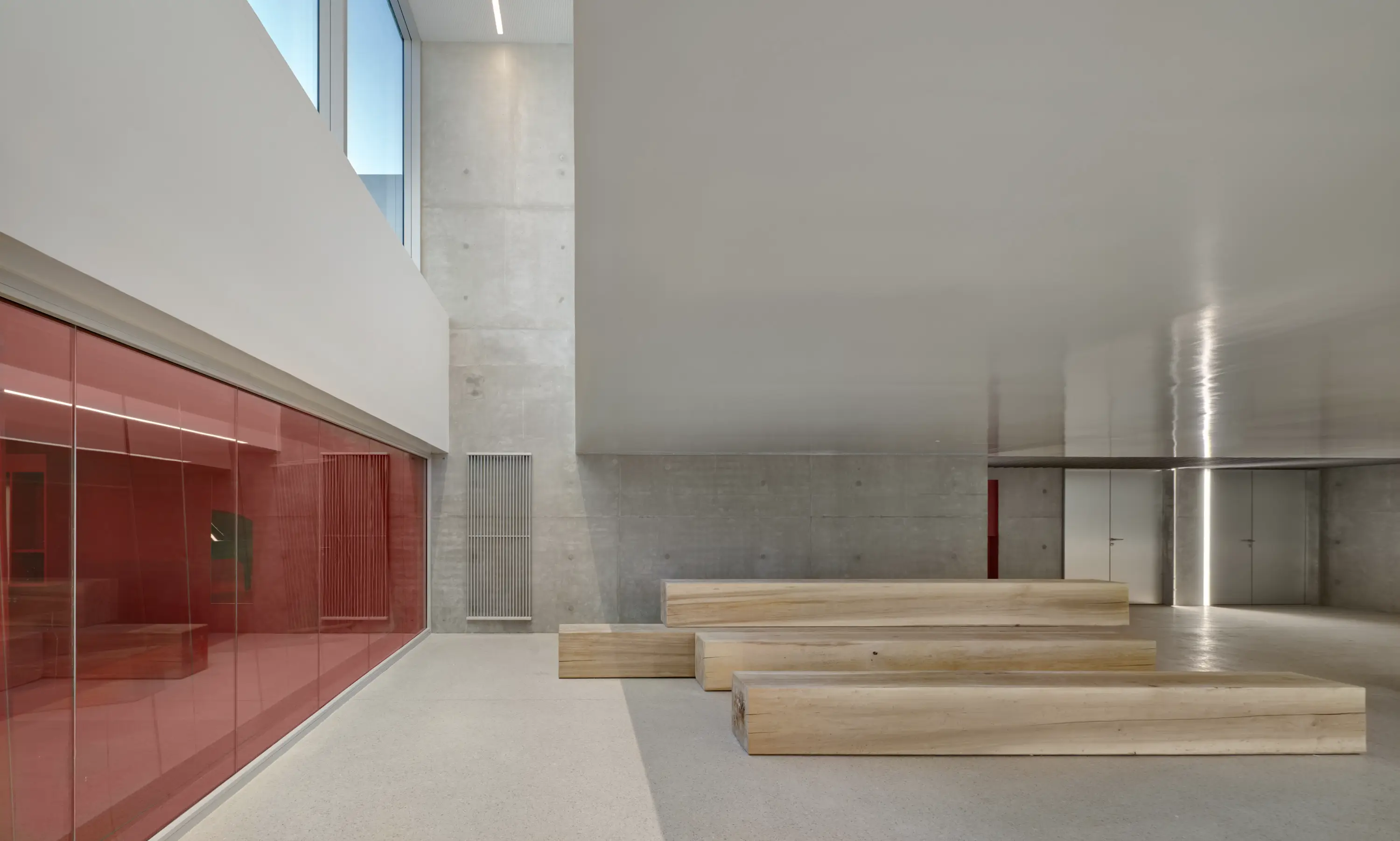
Circulation spaces provide open views into some of the rehearsal rooms. Photo © Eugeni Pons
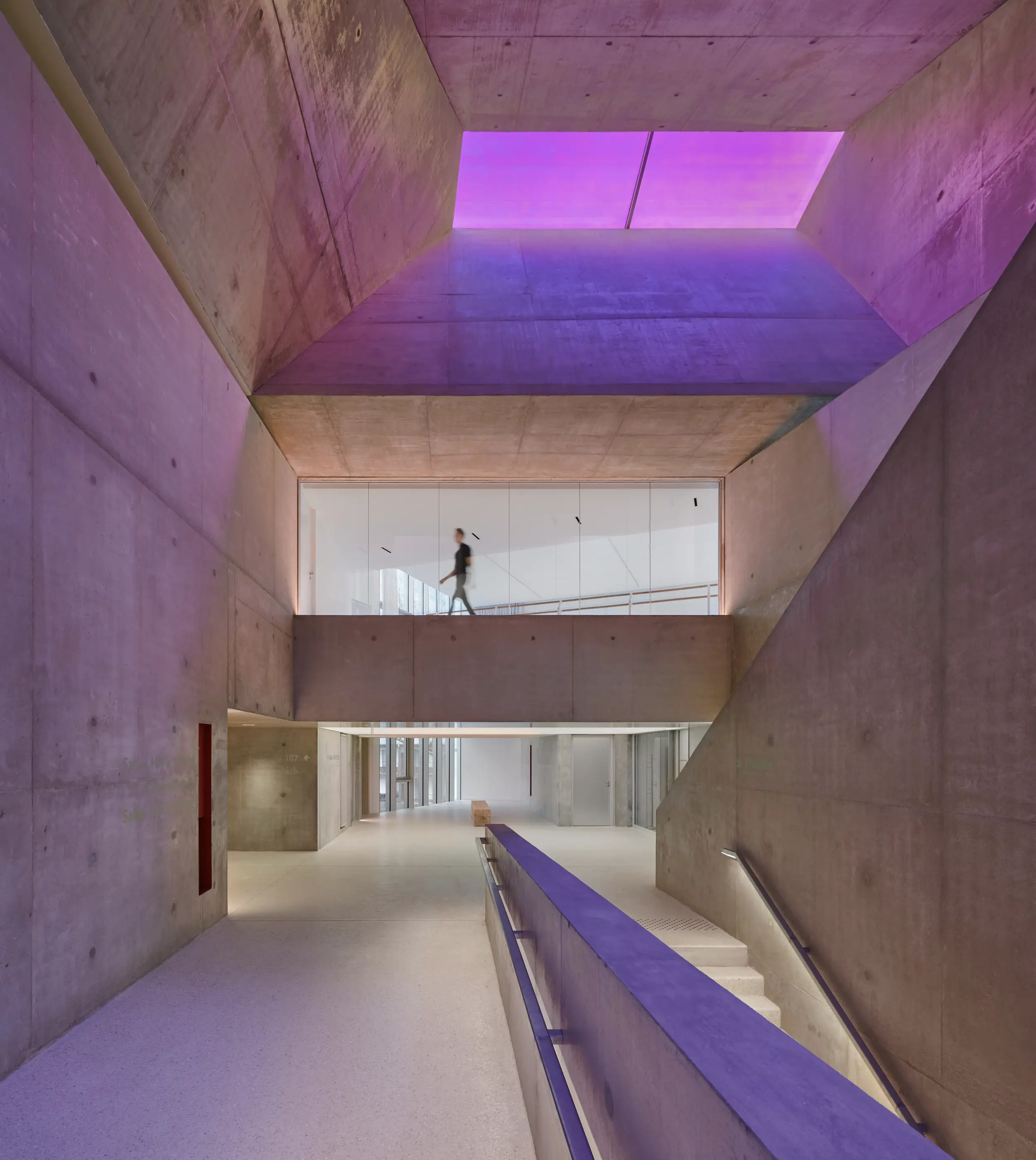
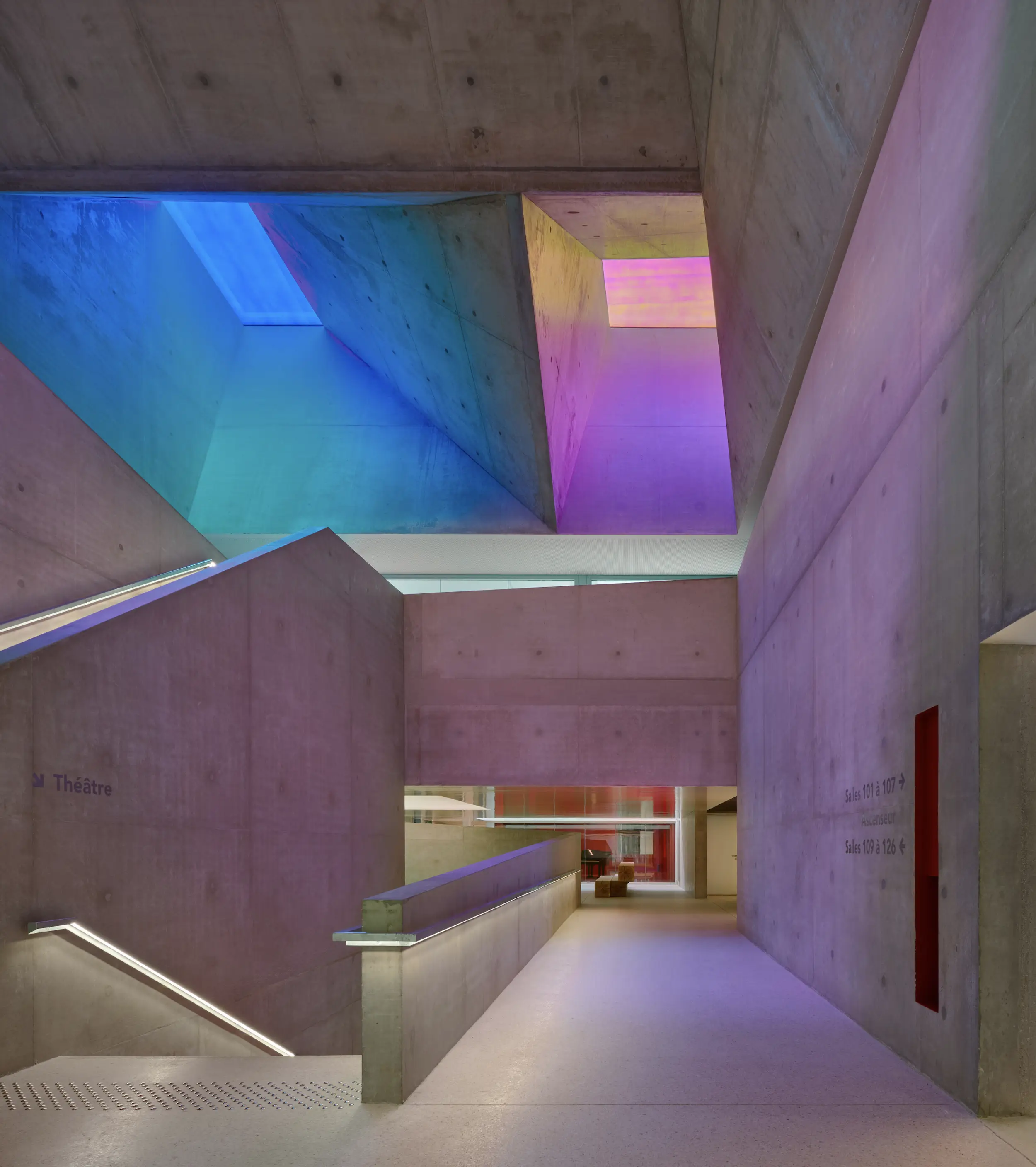
A trio of dichroic film–covered skylights draw natural light into the central atrium with a kaleidoscopic effect. Photos © Eugeni Pons
Linchpin of the whole composition, the atrium is crowned with three concrete “light cannons,” a motif borrowed from Le Corbusier. Pointing toward different areas of the sky, they bring in splashes of color thanks to dichroic filters covering their glass. Multiple diagonal perspectives through the building help mitigate the sense of compression in a tightly packed program where, despite such ruses, the squeeze is sometimes felt. The architects even managed an oblique view from the largest of the top-floor dance studios down into the semi-sunken auditorium—proof, once again, of Coulon & Associés’ talent for creating complex, spatially dynamic buildings on a modest budget.
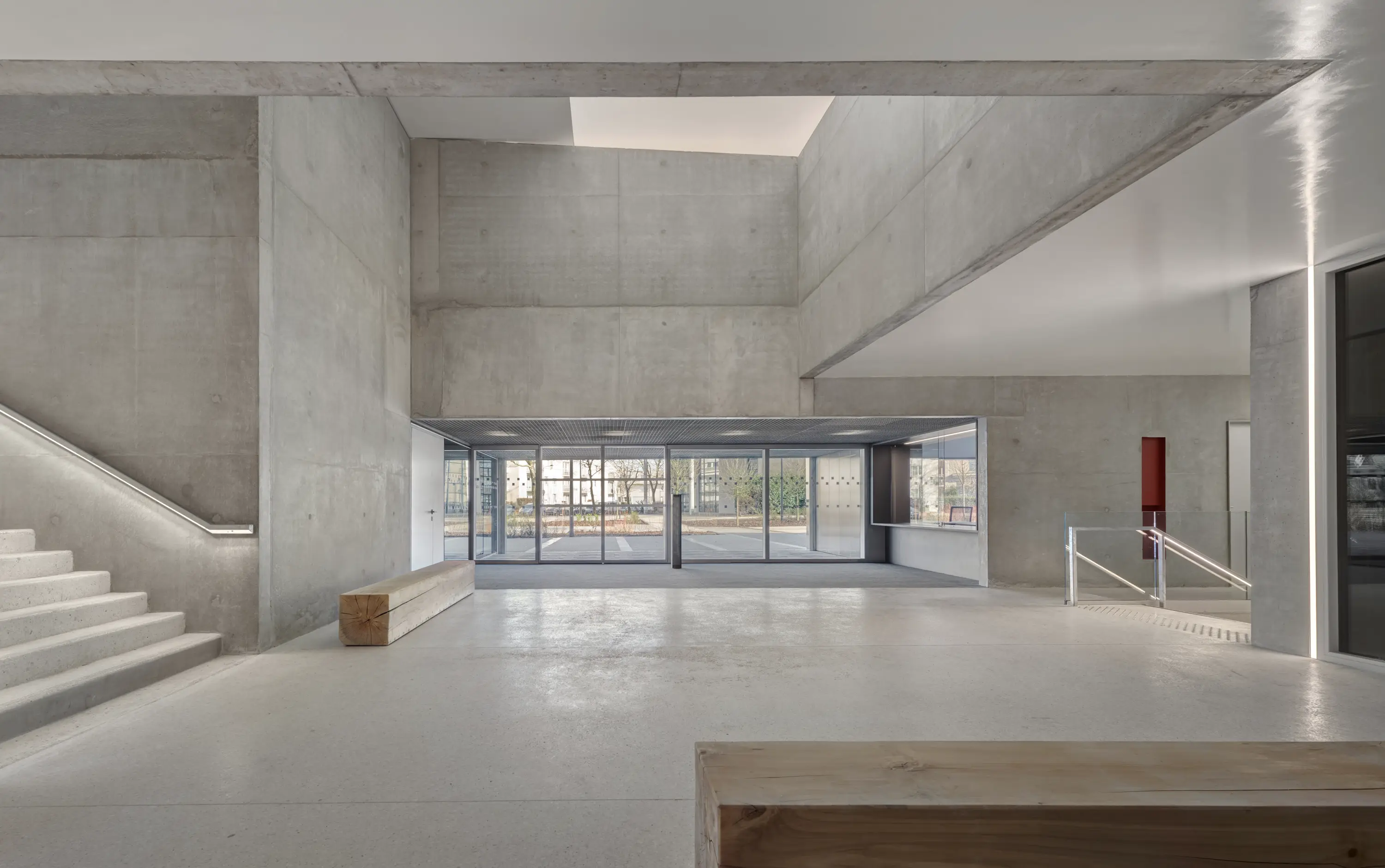
The main entrance hall at Forum des Arts Charles Aznavour, named after the famous French troubador who died in 2018. Photo © Eugeni Pons
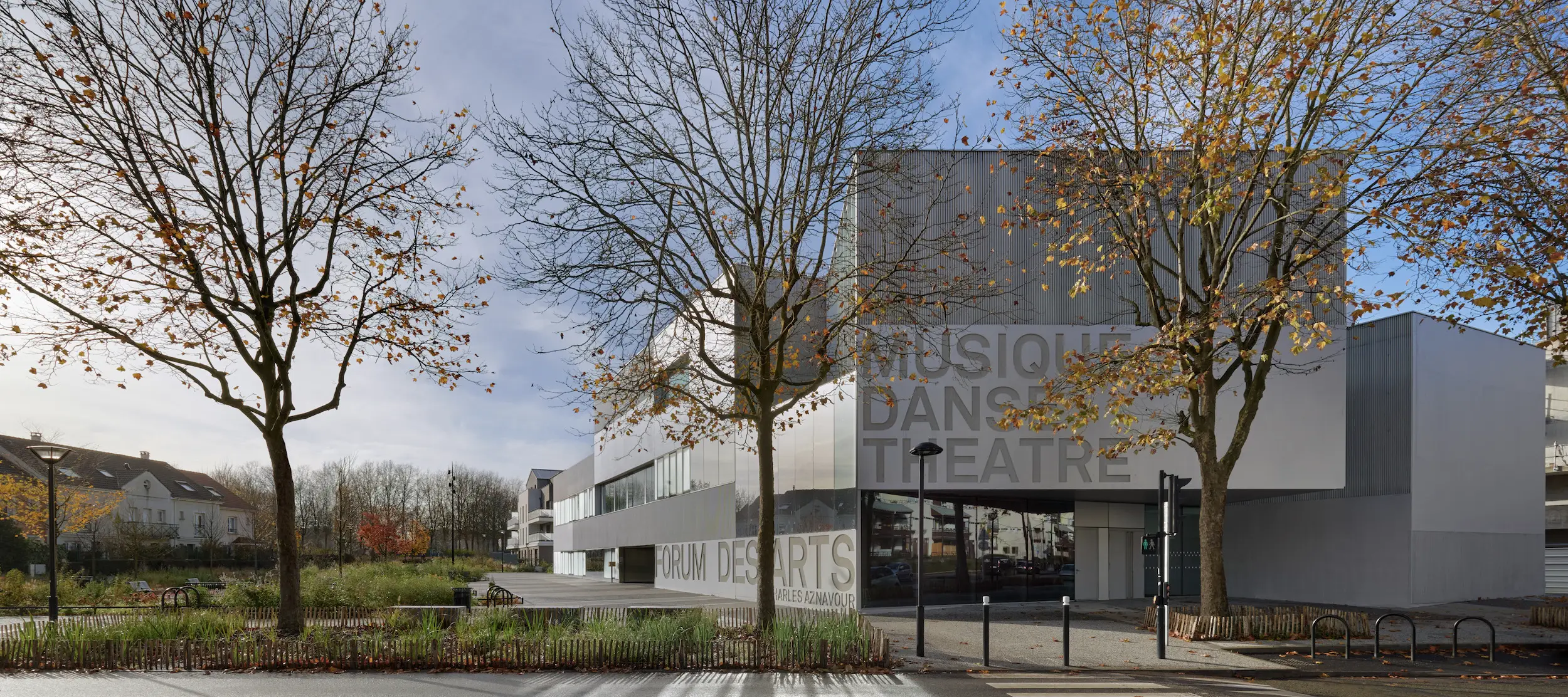
Photo © Eugeni Pons
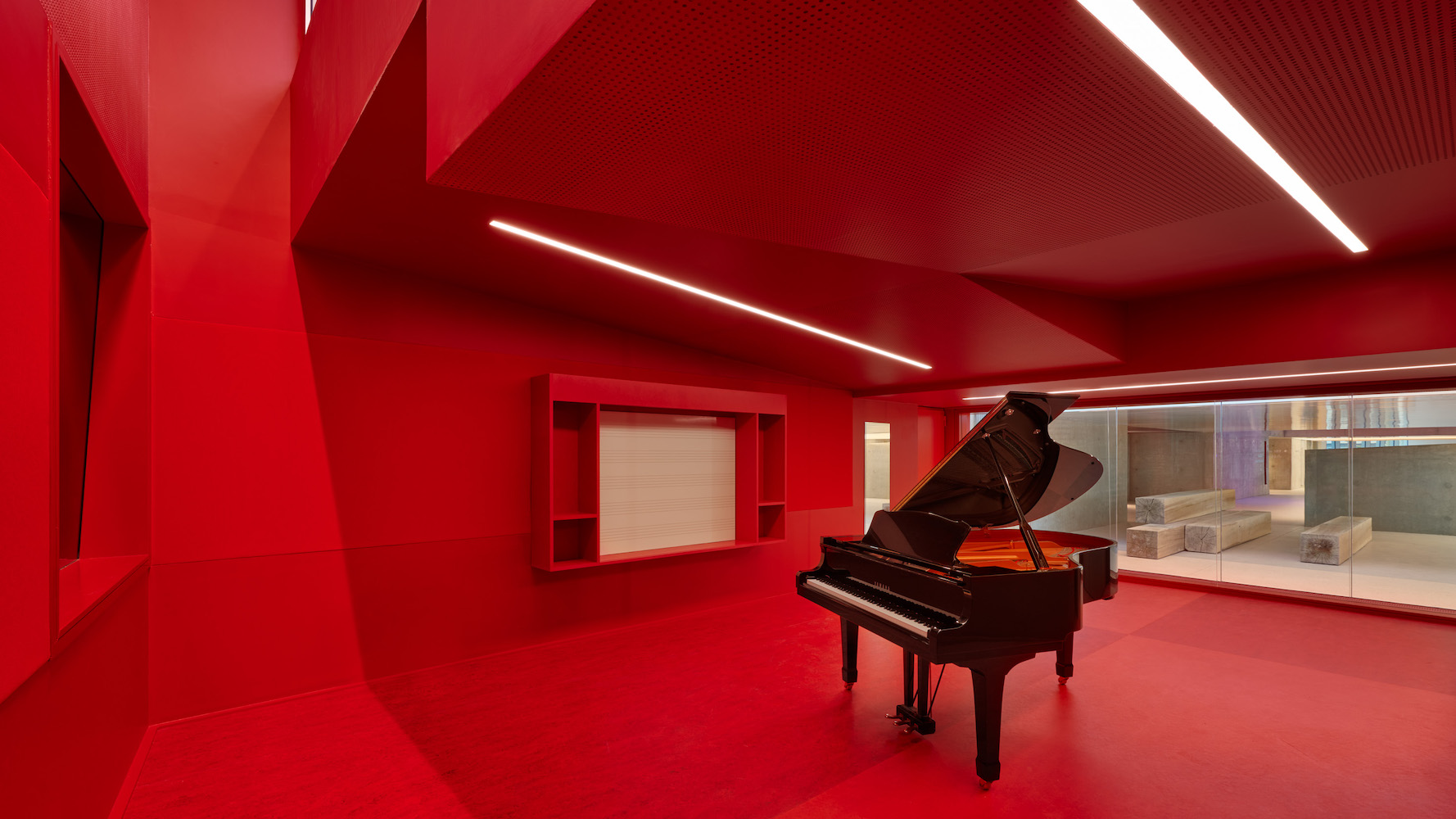


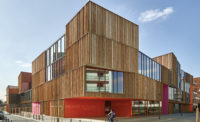
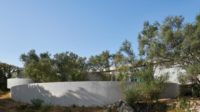
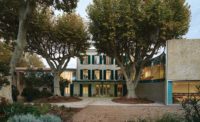
Post a comment to this article
Report Abusive Comment